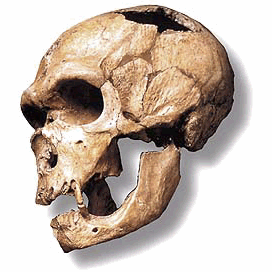Missouri Institute of Natural Science (MINS)
- Laurie L.

- Feb 4, 2018
- 3 min read
Updated: Jun 22, 2022

In today’s society, it's more important than ever to find an institute to enjoy. Families want to expose to their kids to science, people love to explore, and sometimes people just want a cool place to go when they're bored.
About
This blog post is about an ever-expanding science institute in the middle of Missouri that was both a hidden gem to me and a grand awakening for the exploration of science! This visit I took allowed me to access information that I never would have discovered if I had just stayed at home.
The fossils were amazing and its accessible for people with disabilities. The parking was free and the visit was free as well with tours offered on their WEBPAGE. There's opportunities to volunteer and do group projects.

The Missouri Institute of Natural Sciences (MINS) is located in Springfield, Missouri. It’s rather tucked away from the popular shopping district, but is home to several amazing fossils and discoveries that my funding allowed me to uncover through a visit.
On the tragic day of September 11th, 2001, there was a scheduled demolishing of a rock formation in the area. Due to the tragedy of that day, the demolishing was only done on a small scale. Uncovered was a 2,000 foot long cave left untouched for 1.1+ million years.

Riverbluff Cave is so well preserved, it has top layers of dirt that are over 570,000 years old. It's the oldest known Ice Age fossil cave in North America to date (2018). Thousands of bones were found, completely unfossilized, including that of lions, short-faced cave bear (the largest in existence), mammoths, reptiles, and rodents. Findings were present right at the entrance as an unexpected earthquake trapped all the living creatures inside. Among the living things found were millipedes, salamanders, and other typical cave life.

Several new discoveries for science were made including a possible new species of mammoth and short-faced bear. In typical displays of the bear, you would see their claws spread out to show their size and aggression. In the cave, there were claw marks of the bear who were trying to get out, showing that they can’t expand their claws.
Although the claw marks aren’t “fossils” per se, there’s a scientific term used to describe the evidence of a living creature without the bone of the creature itself. The term is ICHNOFOSSILS or trace fossils. These kinds of fossils and evidence are just as important as an actual fossil because it shows an exact moment in time for how a creature actually lived and behaved.

The bone-chilling claw marks that are shown in photographs on the walls of the institute capture a desperate minute in time where a poor animal tried to claw its way out of the cave. Regular fossils and rock formations show a time frame of big scale proportions with thousands, hundreds-of-thousands, and millions of years of time without any information for the environment or ‘lifestyle’ of the creature or area. The MINS is home to the world’s only fossilized worm and is currently constructing the world’s largest Triceratops!

Dinosaurs, mammoth skulls, and cave tours are all available for inquiring minds at MINS. I would strongly recommend visiting and taking a tour if you can because it was worth it and gave powerful insight into life beyond the present.
Take the time to visit your local museums and science institutes because you’ll learn valuable information about life beyond your personal experience of the world. Message the Missouri Institute of Natural Sciences on their website if you’re interested in scheduling a visit. They also take in spontaneous visitors during their regular hours!
#evolution #outreach #scienceoutreach #science #scienceducation #sciencecommunication #scicomm #scienceblog #blog #education #museum #sciencemuseum #sciencecenter # institute #lab #travel #adventure #discovery #mins #missouri #springfield #missouriinstituteofnaturalscience #bears #lions #mammoths #caves #exploring #fossils #excavation








Comments